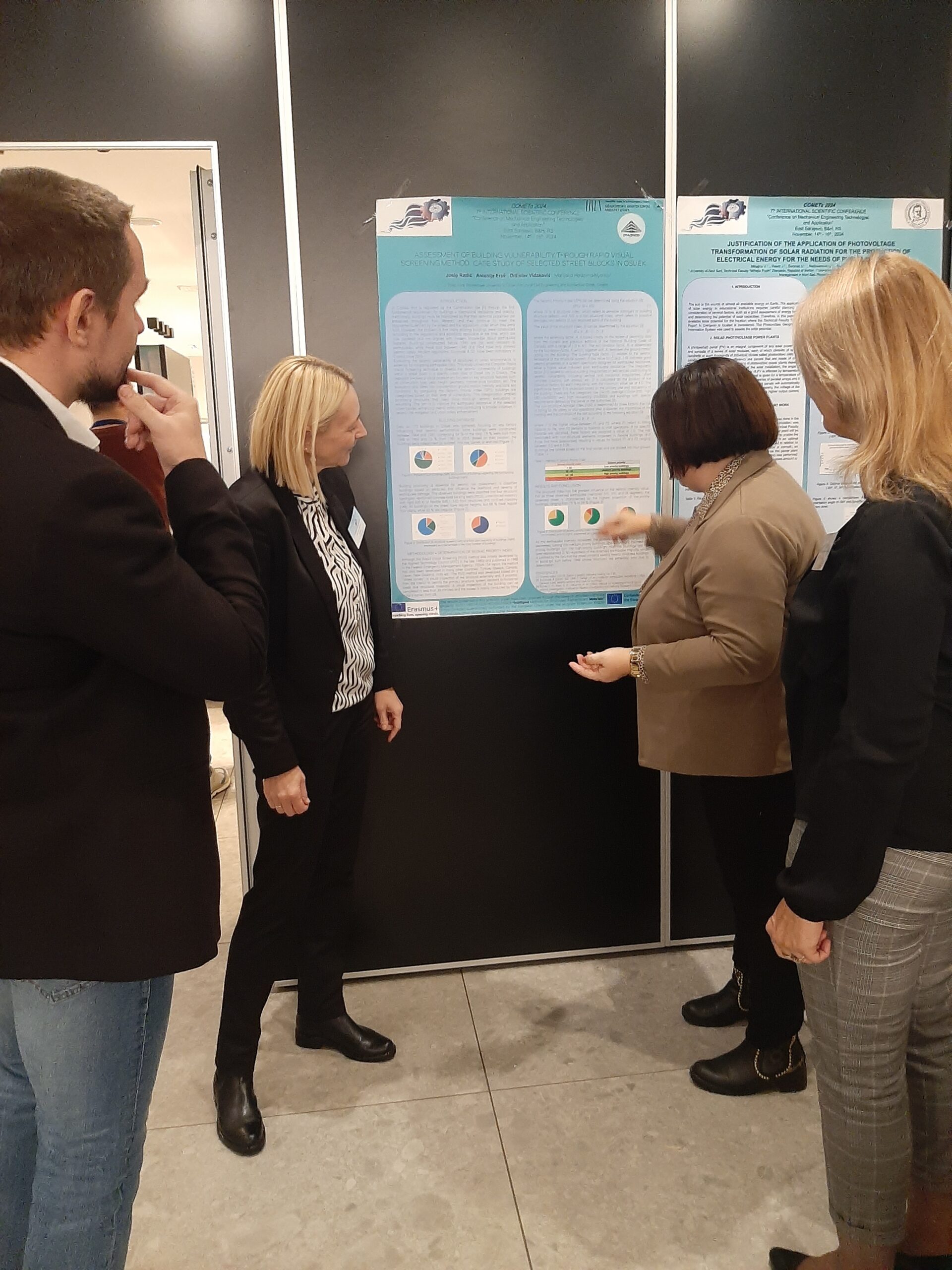A scientific paper entitled “Assessment of building vulnerability through rapid visual screening method: a case study of selected street blocks in Osijek” was presented at the international conference “Conference on Mechanical Engineering Technologies and Applications” COMET 2024. The paper presents research on the earthquake resistance of buildings using the Canadian Rapid Visual Assessment (RVS) method. This method enables quick identification of critical buildings based on their structural characteristics, year of construction, height, geometry and state of maintenance. By calculating the Seismic Priority Index (SPI), buildings are categorized according to the level of damage, which enables prioritization for more detailed assessments or remediation measures.
The research focused on city blocks in Osijek and analyzed data on 177 buildings. The results showed that most buildings are of low priority, but as the intensity in the earthquake increases, so does the number of buildings in higher risk categories. Older buildings and those with irregular floor plans are particularly at risk. It was concluded that methods such as RVS enable quick and efficient identification of earthquake-damaged buildings and thus contribute to safer urban planning and seismic risk reduction.
